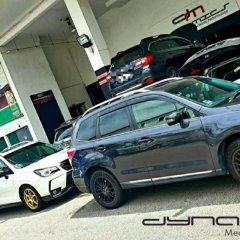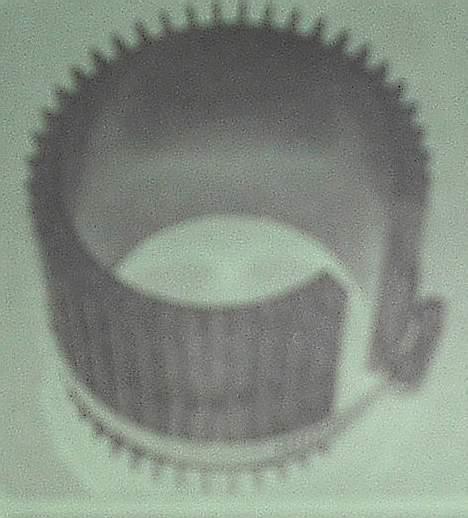Search the Community
Showing results for tags 'heat'.
-
Geography is what most people understand to be the study of where countries are. That's why not knowing where a country is on a map will result in your friends saying, "Never study geography ah?" Of course, geography is deeper and more complex than just finding countries and cities on a map. It also involves studying a country's features such as mountains, lakes and rivers, and most importantly, peoples. We won't dive into all this. Instead, we'll get into how Singapore's geography determines its climate and how this in turn influences our lifestyle. Photo: Maarten Duineveld, Unsplash Swedish observation Singapore sits just above the equator, so you might say that our two most abundant resources are the sun and its heat. Anyway, during a work trip to Sweden some years ago, a fellow journalist and I noticed many locals doing a variety of outdoor sports. From cycling to running to tennis, it seemed like everyone had an active lifestyle. "It must be the weather. The climate is so cool that even I want to pick up a tennis racquet!" he remarked. As we drove along, I remembered my geography classes in school. How citizens of a country live - this is very much influenced by its climate. Obviously, Sweden is way up in the northern hemisphere and gets plenty of snow in the winter, which explains why it's a cold country. Indeed, it was cold for the first week of October, which was when the trip took place. I recall temperatures only reaching 12 degrees during the day, dropping to around 4 degrees Celsius at night. Walking, running and cycling would certainly feel shiok in this weather. The weather lately feels desert-like. Photo: Giorgio Parravicini, Unsplash Meanwhile, in the sweltering tropics... It's only going to get hotter in Singapore. Numerous temperature and UV warnings have been issued, and the wet and cool weather we enjoyed for a prolonged period last year has long departed. We can only hope it will visit again. Life doesn't stop just because it's hot. However, it also makes exercising outdoors - and being active in general - unappealing. Combined with high humidity, it's not uncommon to hear people complain that they're already sweating after walking to the bus stop below their block. If you're from a temperate country and have never been to the tropics, you probably think I'm exaggerating. Well, come to our corner of the world and feel for yourself. So, hot weather prevents us from exercising? Of course not. Many of us are quite outdoorsy and don't even mind getting tanned (but please apply sunscreen to mitigate skin damage). But the heat tends to make us lazy. Cooler weather makes commuting more comfortable, like these folks in Tokyo. Photo: Redd F, Unsplash Nobody wants to sweat while walking 10 minutes from the office to the hawker centre. So, we'll either drive there or get a private-hire ride. Nobody enjoys sweaty commutes requiring one to walk while transferring from air-conditioned buses and trains. Yes, yes, I know. First World problems. I think this 'problem' though, is one factor that prevents us from becoming fitter. Those of us who've holidayed in Tokyo during spring or fall know that you can easily clock 20,000 steps a day when you're there, probably without breaking a sweat. It must be why everyone there looks so slim. Cooler climes make it more comfortable to do such things. Tampines MRT station is less than 2km from my house, but if I started walking to it at 9am, I hope shower facilities appear in the office by the time I arrive. With cooler weather, more people would walk and cycle as well, since the impact to one's hygiene will be minimal. If commuting becomes pleasant, we might even drive less, thereby lowering emissions and our vehicle's running costs. Photo: Peijia Lee, Unsplash Will it really improve health? The optimistic answer to this is yes, cooler weather will make us more active and therefore, fitter. According to this HealthHub article, the crude prevalence of obesity among residents aged 18-74 years old is 10.5%. This is based on a 2019/2020 National Population Health Survey. But it's too simplistic to conclude that cooler weather will change lifestyle and health trends. Does everyone become healthier/fitter during the cooler and wetter periods? Based on casual observations and conversations, we actually end up eating and drinking more when the weather is cool. Mala hotpot, already a firm favourite, becomes even more irresistible then. Whisky seems 'less heaty' as well. In general, we tend to get hungrier and thirstier the colder we feel. It's all in the mind We can't change our geography, so we can only surmise that if we had a more temperate climate, we'd be more active. I don't think we need single-digit temperatures, but if our weather ranged between 15-20 degrees Celsius on average and humidity also averaged 60% instead of over 90%, a lot would change. Training in hot weather can help improve your cardiovascular fitness. Photo: Karsten Winegeart, Unsplash But would it make us fitter? That might be wishful thinking. Beyond lifestyle and dining habits, mindsets are the most difficult to change. Someone who only insists on high-cholesterol, high-sodium and sugar-heavy foods for every meal is unlikely to change their mind, no matter the weather, or impact to his or her health. I mention food because nutrition makes up a big part of the fitness equation. While exercising regularly (even with poor dietary habits) is better than not exercising at all, we all know that the key to better health is diet + exercise. That's never been a secret. To me, that means healthier choices from Mondays to Fridays, but indulging a bit on weekends. Being more willing to sweat it out will help as well. Instead of taking cover from the heat, I've learned (or convinced myself) to use it to improve my fitness. Hot weather is here to stay. It's our geography and we must do what humans do best: Adapt and thrive. - Jeremy
- 3 comments
-
- workout
- working out
- (and 14 more)
-
DM LED HEAD LIGHTS ================== 2500 lumens LED Headlights ( lastest technology ) energy savings and white light projection. Non heat emission and will not damage headlamp appearance unlike HID. LED Open for bookings now. Message or call us at 6341 6164 to enquire.
- 4 replies
-
- head lights
- headlights
-
(and 6 more)
Tagged with:
-
Just like donkey years back, scientists once said that lard is bad for our health but over the past few years, researches have shown that lard is a good source of fats that support a healthy heart. What about MSG? Isn’t it bad for me? Source: https://www.channelnewsasia.com/singapore/what-lower-sodium-salt-msg-himalayan-pink-salt-sea-salt-2983936 For years, MSG has been viewed as unhealthy as a small percentage of the population reported that they had symptoms like headaches and increased thirst after consuming food at Chinese restaurants, said Dr Bhaskharan. However, newer research has questioned the accuracy of its supposed adverse effects on health, she said. MSG, or monosodium glutamate, is a flavour enhancer derived from L-glutamic acid, which is naturally found in foods like tomatoes, mushrooms and onions, nutritionists said. It also can be artificially made via fermentation using corn or sugar beets. MSG is a non-essential amino acid, which means that our body can produce it and doesn’t need to get it from food, said Dr Bhaskharan. It contains about 12 per cent sodium, which is lower than regular salt. Even though it has less sodium, it can enhance salt perception, and the flavour of food by adding umami, which is a taste that helps to intensify the meaty, savoury flavour, said Ms Stephen. This means that just a small amount is needed to elevate the overall flavour of healthier foods with lower sodium content, she added. Research has also shown that MSG can be used as a suitable replacement for some salt in packaged foods like snacks and soups, which can help to reduce their sodium content by 30 to 50 per cent. “This provides good potential to use MSG to formulate healthier, ‘better-for-you’ food products without compromising on taste. This in turn can propel consumers to choose more nutritious food options and positively impact health,” Ms Stephen said.
-
Source: https://mothership.sg/2022/08/spore-could-hit-40c-by-2045-but-has-measures-in-place-to-tackle-rising-heat/ Heatwaves have been sweeping across various parts around the world, such as China, India and several European countries. Singapore has not been spared from the effects of a warming climate. Members of Parliament (MPs) took note of the rising temperatures as well, and posed several questions in Parliament on how Singapore is managing heat stress and the urban heat island effect at workplaces and in communities. In response, Minister for Sustainability and the Environment Grace Fu highlighted on Aug. 2 that the heatwaves "portends the severe consequences" Singapore would face if steps are not taken to mitigate climate change. "Singapore will not be spared the impacts of global warming," she emphasised. Fu added that Singapore could see days with peak temperatures of 40°C by 2045. She then laid out in detail the government's three-pronged approach to mitigating and adapting to the heat. 1. Understanding the science behind rising temperatures The first of the government's strategies is to deepen the understanding of the science behind how rising temperatures can affect Singapore and its residents. The Centre for Climate Research Singapore (CCRS) has been studying how global climate projections translate into localised effects here. One focus of the studies is the El Niño phenomenon, which is typically associated with hot and dry weather in Southeast Asia. To understand how heat affects the Singapore population, Fu shared that the government is also driving research and development to study the factors contributing to urban heat, testing different heat mitigation strategies, and assessing the effects of heat on public health. 2. Strengthening heat resilience in communities To strengthen community resilience to climate change, the government uses a science-based approach to develop policies and guidelines. Some segments of the population, like the elderly and outdoor workers, are more vulnerable to rising temperatures. As such, the Ministry of Sustainability and the Environment (MSE) is working with the Ministry of Health (MOH) and the Ministry of Manpower (MOM) to study the effects of heat stress, and to ensure workplace guidelines are up to date based on the latest scientific evidence. 3. Designing effective heat mitigation strategies Thirdly, the government currently has two broad categories of heat mitigation strategies. Planting more greenery The first is to promote cooling in Singapore's urban environment. Senior Minister of State for National Development Tan Kiat How shared more about some specific measures currently in place. The Building and Construction Authority (BCA) requires building designs to limit heat gain from the outside, which improves the thermal comfort of the building's occupants. BCA's Green Mark Scheme also recognises buildings that implement urban heat island mitigation measures such as planting greenery. Similarly, to optimise thermal comfort, Tan shared that Singapore's HDBs face the north-south direction to reduce heat gain. The layouts of new estates are also designed to "harness existing wind corridors and optimise wind flow". A pilot to use cool paint, which reduces ambient temperatures by up to 2°C, is also being conducted in existing HDB towns. Additionally, more greenery is being planted in residential and industrial estates, and on the tops of multi-storey carparks in the form of urban farms and community gardens. Tan cited studies which show that intensified tree planting in Singapore can reduce midday temperatures in the area by up to 0.9°C. Reducing individual energy consumption The second category, which Fu elaborated on, are measures used to reduce heat generated from human activities such as from homes, roads and industries, Examples of such measures are efforts to electrify the local vehicle population, and to increase the energy efficiency of industrial, commercial and residential buildings. At the individual level, the government has also been encouraging the use and purchase of more energy efficient appliances, through the introduction of the Mandatory Energy Labelling Scheme. When individuals reduce their energy consumption, the energy generated by power stations will also be reduced, therefore reducing both the production of heat and carbon emissions. Fu concluded:
-
Is the weather really that warm that you need to ride without clothes? This motorcyclist thinks so. Spotted on SGRV's Facebook and many other sources, a short-hair motorcyclist can be seen riding nude by the camera bike traveling along PIE towards changi. The nude rider then left the highway via the Bedok North Rd exit with the camera bike following closely, allowing us to get a closer look at this bewildering sight. Thankfully, the video that has been uploaded to the web doesn't show his private parts...
-
where can i find foam based heat insulating material? i wanna slap it over my airbox... and do my own heat shield any clues?
-
By Tan Weizhen - 6 hours 19 min ago SINGAPORE
-
Weather's a b!tch nowadays so bros better take care go drink more water. From CNA: http://www.channelnewsasia.com/stories/sin...1208656/1/.html Heat stroke cases increase with rising temperatures By Kheng Leng/Alice Chia | Posted: 19 June 2012 2148 hrs
-
Check this out guys ... it's sold in Japan. Simple concept, just mount in onto your oil filter and it's blade will help cool the oil filter down. Just a simple heat sink concept. Maybe a few CPU heatsink mount together also can ;-)
-
Just replaced my rear brake pad and noticed that it "bite" more and car is more reluctant to move . E.g have to step on accelerator before the car will move while previously it will slowly move ... Likewise it will slow down faster than previous. Also the brake disc , rim and tyre are now much hotter compare to the front . I know that it will take a while before the brake pad is "seasoned" but should I be concerned as the high temperature may affect the brake hose etc.... Is this normal or I should go back to see if something can be done.
-
Mother in tears after seeing her baby's severe burns from being left on heat packs When she saw her baby in pain with a large part of her back burned pink and raw, all Madam Farah (not her real name) could do, was to bawl her eyes out. According to a report in The Straits Times, on Oct 31, 2011, the toddler, Alya (not her real name) was at her babysitter Madam Mardianah
-
Hi all, Anyone here have done it before? any downside of doing so? What are the estimate installation cost? Thank you very much. Regards,
-
Hi all, May I know if anyone knows of local supplier(s) for heat sensitive ink or paint? If not, are there any tried suppliers overseas that will ship fast to singapore? Thank you very much!
-
Yahoo report : Apple's iPad throws off much more heat: tests SAN FRANCISCO (Reuters) - Apple Inc's new iPad throws off a lot more heat than the previous version, lending weight to complaints on Internet forums that the hot-selling tablet computer could get uncomfortably warm after heavy use, an influential consumer watchdog found after running tests. Consumer Reports, a widely followed group that reviews everything from electronics to cars, found that Apple's new tablet racked up temperatures of 116 degrees Fahrenheit (47 Celsius) after 45 minutes of running an intense action game, up to 13 degrees F hotter than the previous model under similar conditions. Using a thermal imaging camera, it ascertained that the front and rear of the tablet could run 12 to 13 degrees F hotter than the iPad 2 after running Infinity Blade II, depending on whether it was plugged in, Consumer Reports said. The group, which can be instrumental in the success or failure of consumer products, has not reached a final decision on whether to recommend the latest model of Apple's tablet. A spokesman urged caution on the part of consumers but added the heat issue in itself did not appear serious enough to void its recommendation. Consumer Reports plans to release a final review on the new iPad - which has sold more than 3 million units since it hit store shelves in more than 10 countries on Friday - in about five days. "During our tests, I held the new iPad in my hands. When it was at its hottest, it felt very warm but not especially uncomfortable if held for a brief period," reviewer Donna Tapellini said in the report. The third iteration of the iPad, which hit markets in 2010, set a record for first-weekend sales when it launched Friday. Hmmmmm.......... suitable for those with rheumatism and needs heat treatment.....
-
Any one have or know any workshop that can customize heat shield. I know of some FL outside doing with those Aircon form. But I am not looking at that. I am looking for those aluminum type. Please advice on that Tks
-
Monks face pressure of foreign competition Income from prayer sessions down as foreign monks charge lower rate Local monk Ang Juat Chong says he spoke to his MP, Mr Yaw Shin Leong, about unlicensed monks working in Singapore. -- ST PHOTO: SAMUEL HE Some monks here are feeling the heat of competition provided by their foreign counterparts. n particular, the local monks claim that foreign monks, who are mostly from China and Malaysia, are undercutting them by charging up to 50 per cent less for prayer sessions conducted at funeral wakes. Mr Ang Juat Chong, 59, a Singaporean who has been a Buddhist monk for the last 18 years, said his monthly income has gone down by as much as 70 per cent in the last two years because of this. 'Local monks charge about $1,200 to do Buddhist rites at funeral wakes, but these foreign monks charge only $600 or $700. So of course, funeral parlours will prefer to hire them,' he told The Straits Times yesterday. He also suggested that some of these monks are not supposed to be chanting prayers at these wakes. He said he knows of at least one 'monk' from Malaysia who is here on a work permit and supposed to be working as a salesman. He added that there are real monks who are here on work permits that state they are doing religious work. But, he claimed, that permit does not allow them to be hired by funeral operators to chant prayers at wakes. Mr Ang, who is based at a temple in Lorong 7, Geylang, said he has approached the authorities about this and also saw Hougang MP Yaw Shin Leong about it. Mr Yaw mentioned the meeting in a Facebook post on Thursday. Other Buddhist monks said they have also noticed an influx of foreign monks in recent years. Reverend Ru Hong, 55, of Guat Hoon Vegetarian temple in Kembangan, estimated that more than half of all monks here are foreigners, up from about 30 per cent two or three years ago. He, too, claimed that while some of these foreign monks are real monks at home, they are being hired out to chant at wakes here despite being on other forms of work passes or even social visit passes. Rev Ru Hong, who has been holding prayer sessions at funerals and other ceremonies for more than 10 years, added that these monks are mostly hired to do prayers by middlemen such as undertakers. But he added that his takings have not been affected. Mr K.C. Low, 61, who is from a Buddhist temple in Rangoon Road, said his income has dropped by at least 30 per cent in the past five years. 'The foreign monks are cornering the market, and from what I heard, some of them are willing to do prayers for just $200 or $300,' he said. Mr Z. Chin, 63, who took to the cloth a decade ago and is based in a Buddhist temple in Geylang, said that some months go by without him getting called to conduct a single prayer session at funeral wakes. Three or four years ago, he would do around three sessions every month. The influx of monks is especially high during the Seventh Month Hungry Ghost period, said the disgruntled monks. Mr Ang estimated that at least 100 such foreign monks operate here during this period because of the higher volume of prayers and other ceremonies. While foreign monks may offer cheaper rates, Reverend Sek noted that they may not be familiar with local customs or praying procedures. Still, Mr Calvin Tang, 35, an undertaker with Singapore Casket, said Singaporean families normally 'won't know the difference even though the foreign monks chant in a different way from local ones'. Rev Ru Hong said local Buddhist monks go through a head-shaving ceremony witnessed by three senior monks in a monastery. They also have a booklet that certifies that they have learnt all the rules and procedures and have vowed to abide by them, and this booklet is given out by temples.
-
Seems like internet is under very close watch nowadays from the authorities Cleaning up to prepare for the big erection? Seems like SBF website from the TV news. Saw the names, - LaserBabes - AINO
-
hi , apart from cutting the bonet or to change to vented ones... to raise the rear part of the bonet to vent heat, qns is how much to be raise. hear before from workshop. raise abt 12~15mm the gap. is it good? wat is recommended? adv : heat wont trap under bonet , lower temp. disadv : those go outside car wash, water may jet into engine bay. ------------------------------------------------------------------------------------------ i tot of raising the rear to vent heat. at the same time. put rubber sponge to block from the passenger side to the after-the-fusebox to prevent heavy rain from splashing at the batt and fuse box. <-- thats where the fuse box and batt are. well the driver side of the car is not so much of electrical though. and while moving is not so much of a issue to water enter from gap. only worry if go car wash... inside spray like swimming pool ahhaha.
-
As above.
-
I replaced my car original spark plug NGK LFR5A-11 with NGK LFR6A-11 (the stockist told me this model for my car). Is it OK, will there be any problem?
-
intend to get 2nd hand P80 or 9887 advice anyone?
-
I just changed a new job and they provide us with a open space parking area, as I'm new, I suay suay kena those lot without shade. Everyday during lunch time I had to waste 10-15mins to wait for the heat to cool down. The seat and steering wheel is like on fire. I did not install any v-cool or sun cool for my car, not too sure about those stuff. But I need some advice now, like does v cool really works at all? I have been hearing about them alot before. I will mostly install it for whatever cost.. as my current lot is free, I need to pay $25 for parking fee at non-staff parking lot everyday. so its worth it.

















